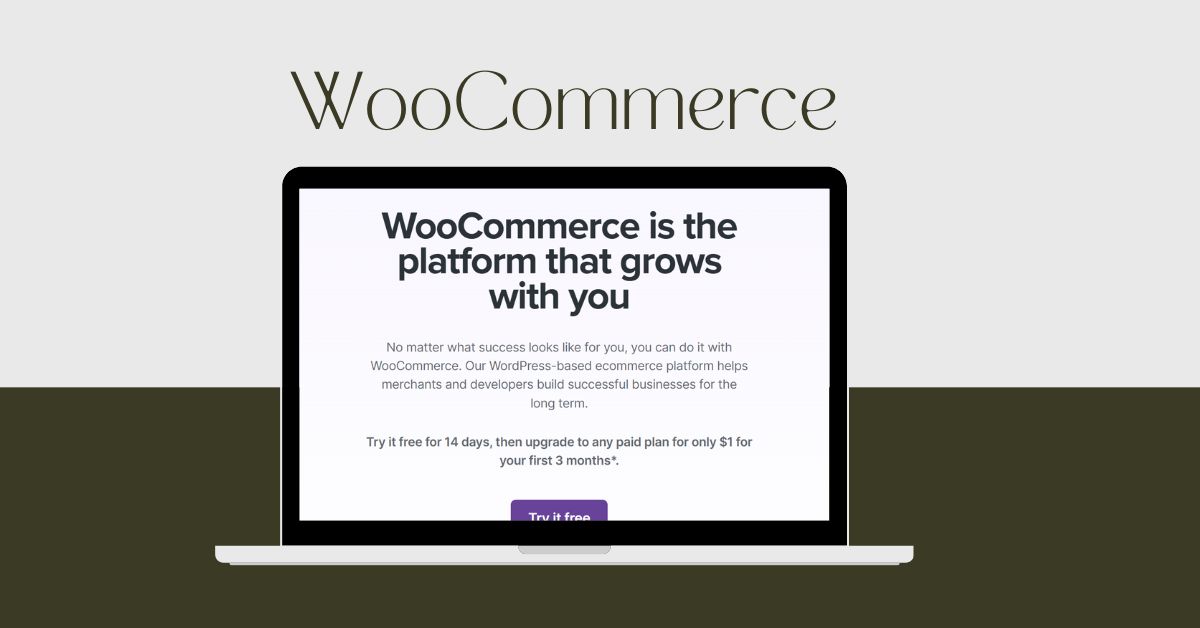Creating an online store is an exciting venture, and with the right tools, you can turn your e-commerce dreams into reality. One such powerful tool is WooCommerce, a WordPress plugin that seamlessly integrates with your website, transforming it into a feature-rich online store. WooCommerce, a leading eCommerce platform, is renowned for its adaptability, scalability, and seamless integration with WordPress. As a small business owner or entrepreneur, leveraging WooCommerce can empower you to establish a robust online store.
This comprehensive guide will equip you with the knowledge and confidence to set up WooCommerce on your WordPress website successfully.
Step 1: Install WordPress
If you haven’t already installed WordPress, follow these steps:
- Download WordPress: Go to wordpress.org and download the latest version of WordPress.
- Upload to Your Hosting Account: Upload the WordPress files to your web server using an FTP client or your hosting provider’s file manager.
- Create a Database: Create a MySQL database and user in your hosting control panel.
- Run the Installation Script: Open a web browser, navigate to your domain name, and follow the on-screen instructions to complete the WordPress installation. If you encounter any issues during the installation, such as a ‘database connection error, ‘double-check your database settings in your hosting control panel and ensure they match the settings you provided when creating the database in Step 1.
Step 2: Install and Activate WooCommerce
Once you have completed Step 1, you must discourage search engines from indexing your website until you finish setting it up and designing it.
- Log into Your WordPress Admin Dashboard: Access your WordPress admin area by navigating to yourdomain.com/wp-admin.
- Navigate to Plugins > Add New: In the left-hand menu, click on “Plugins” and then “Add New”.
- Search for WooCommerce: In the search bar, type “WooCommerce”.
- Install WooCommerce: Click the “Install Now” button next to the WooCommerce plugin.
- Activate WooCommerce: Once installed, click “Activate” to enable WooCommerce on your website.
Step 3: WooCommerce Setup Wizard
After activating WooCommerce, you’ll be greeted by the WooCommerce setup wizard, which will guide you through the initial configuration.
- Store Details: Enter your store’s address, country, and currency.
- Industry: Select the industry that best describes your store.
- Product Types: Choose the products you plan to sell (e.g., physical goods, digital products, subscriptions).
- Business Details: Provide information about your business, including the number of products you plan to display.
- Theme: You can choose a theme for your store. You can select a free WooCommerce-compatible theme or purchase a premium theme.
Step 4: Configure WooCommerce Settings
- General Settings:
- Navigate to WooCommerce > Settings > General: Configure basic settings such as your store’s address, currency options, and selling locations.
- Product Settings:
- Navigate to WooCommerce > Settings > Products. Here, you can Configure product settings, including measurement units, product reviews, and inventory management.
- Tax Settings:
- Navigate to WooCommerce > Settings > Tax: Set up tax options based on your location and business requirements.
- Shipping Settings:
- Navigate to WooCommerce > Settings > Shipping: Configure shipping zones, methods, and rates.
- Payments Settings:
- Navigate to WooCommerce > Settings > Payments. Enable and configure payment gateways such as PayPal, Stripe, or direct bank transfers here.
Step 5: Add Products
- Navigate to Products > Add New:
- Product Title: Enter the name of your product.
- Product Description: Provide a detailed description of your product.
- Product Data: Configure product data, such as price, inventory, shipping options, and linked products.
- Product Short Description: Enter a short description that will appear next to the product title.
- Product Categories and Tags: Assign categories and tags to organize your products.
- Product Images: Upload a main product image and gallery images.
- Publish Product: Once you’ve filled in all the necessary information, click the “Publish” button to make your product live.
Step 6: Customize Your Store
- Choose a Theme: Select a WooCommerce-compatible theme that suits your brand.
- Navigate to Appearance > Themes > Add New: Search for a theme and install it.
- Customize Theme: Go to Appearance > Customize to modify your theme’s appearance, including colors, fonts, and layout.
- Install Additional Plugins: Enhance your store’s functionality with plugins for SEO, marketing, analytics, and more.
- Recommended Plugins: Yoast SEO, WPForms, MonsterInsights, Mailchimp for WooCommerce.
Step 7: Set Up Pages
WooCommerce automatically creates essential pages such as Shop, Cart, Checkout, and My Account. Ensure these pages are configured correctly.
- Navigate to Pages > All Pages: Review the pages created by WooCommerce.
- Edit Pages: Customize the content and layout of these pages if necessary.
Step 8: Test Your Store
- Place a Test Order: Ensure your checkout process works smoothly by placing a test order.
- Check Email Notifications: Verify that order confirmation emails and other notifications are sent correctly.
- Thoroughly testing your store’s performance on various devices and browsers is crucial. This step ensures that your customers will have a seamless experience, regardless of how they access your store. Conducting comprehensive tests can help you feel prepared and confident for your store’s launch.
Step 9: Launch Your Store
Once you’re satisfied with your setup and testing, it’s time to launch your store.
- Remove Maintenance Mode: If you used a maintenance mode plugin, disable it.
- Announce Your Launch: Promote your store’s launch through email marketing, social media, and other channels. For instance, you can send a newsletter to your existing customers, post about your store on your social media accounts, and consider running a limited-time promotion to attract new customers.
Conclusion
Setting up WooCommerce on your WordPress website is straightforward, especially when you follow these steps. WooCommerce offers a robust, flexible platform to build and expand your online business. By configuring each aspect of your store and conducting thorough testing, you can confidently embark on your journey to running a successful online shop.
